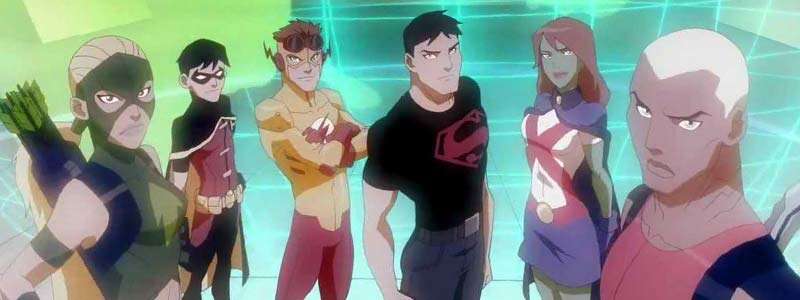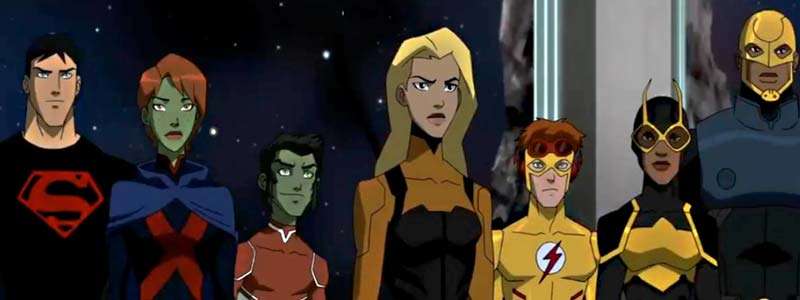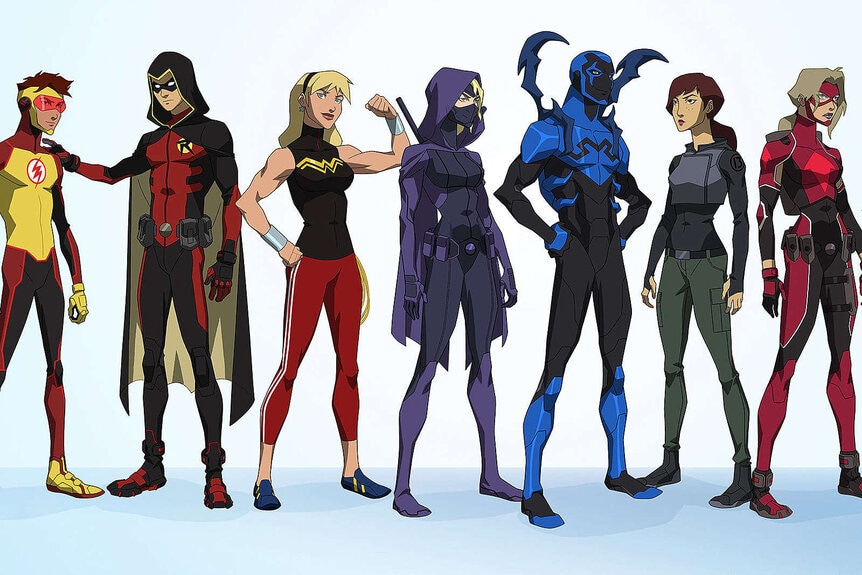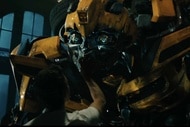Create a free profile to get unlimited access to exclusive videos, sweepstakes, and more!
10 years later, and there's still no show that beats Young Justice at capturing superhero teams and legacy
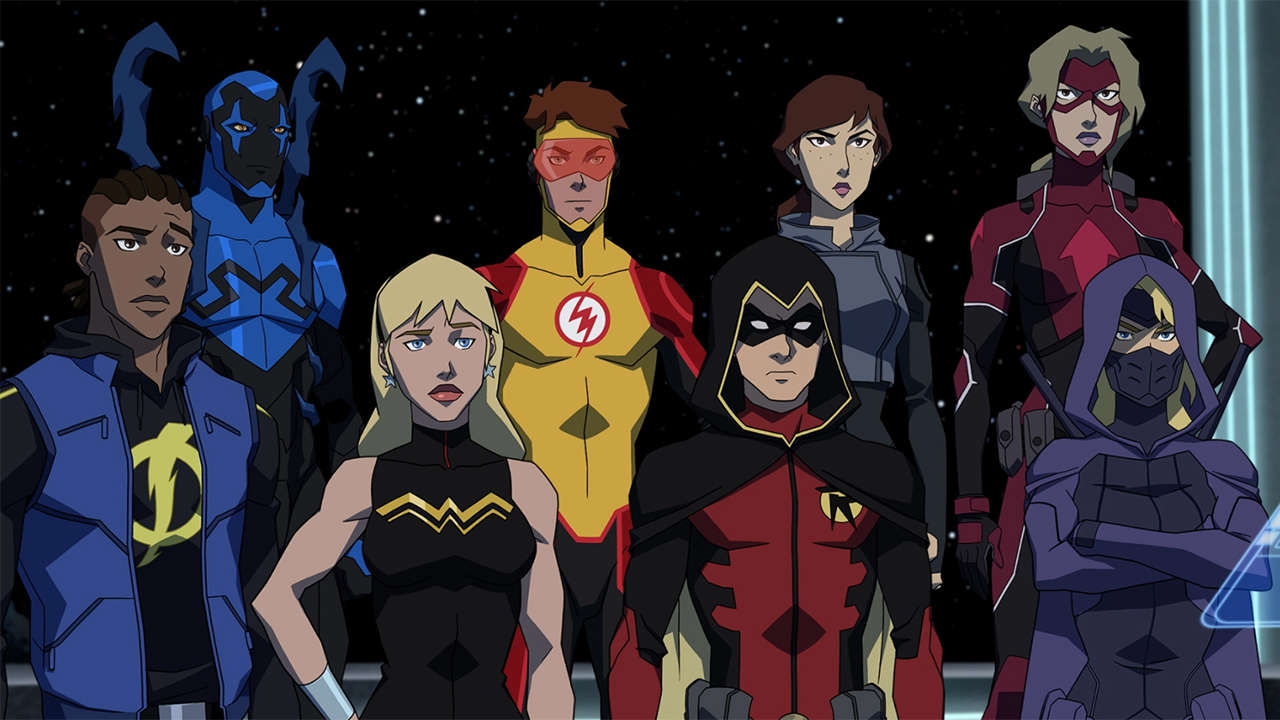
When you watch or read a superhero team story, you usually feel like you're missing something. Sure, you see Superman and Batman kick it momentarily, but you don't get to see what happens when they part ways, or in the moments outside the big fight. Expanded cinematic universes are all the rage, connecting smaller stories by building up a massive crossover. But there is one show that has managed to build an entire universe with a massive, ever-expanding cast that also captures the feeling of seeing your favorite heroes together, all while still showing you what happens after the fight is over and the heroes grow up: Young Justice.
When Young Justice first premiered 10 years ago on Cartoon Network, it was considered a cooler, edgier alternative to Teen Titans. Like that show, Young Justice focused on a single team and a handful of teenage heroes — Robin, Kid Flash, Aqualad, and Speedy (the sidekicks of Batman, The Flash, Aquaman, and Green Arrow, respectively) — who decide to branch out and create "The Team" on their own after being denied proper membership in the Justice League. They're eventually joined in Season 1 by Miss Martian (Martian Manhunter's niece), Superboy (a teenaged clone of Superman), and Artemis (another of Green Arrow's protégés, technically).
Back then, in 2010, the show was mostly about expectations and the legacy of the big superheroes like Batman and Superman, as well as the typical soap antics that come with a cast of teenagers. Even if the focus was solely on The Team and their day-to-day lives — including an episode devoted to Artemis and Zatanna going on a girl's night out while the rest of The Team attends a school Halloween party — we knew there were big things going on in the background. What seemed like small missions at first turned out to be large enough to become threats to the Justice League itself.
With Season 2 came a 5-year time jump, and Young Justice became more of a crossover title than a solo one. Sure, the show still found plenty of time for soap elements and smaller stories so that you always felt like you knew enough about the personal lives of each character, but the focus changed. This season was fully serialized, and in the first episode alone, The Team more than doubled in membership, and the missions were suddenly bigger and more important. Rather than working on the sidelines, The Team worked alongside the Justice League, even saving them on more than one occasion. Because of the growing number of characters, plenty of episodes changed the roster and focused on different teams performing different missions, all while hinting at even more future members of The Team.
Where any other show would try to introduce new characters specifically to develop them through spin-offs, Young Justice keeps its ever-expanding world contained in a single show. Sure, we miss some characterization because of the number of characters and limited screen time, but this is a feature and not a bug. Unlike most superhero shows, the heroes in Young Justice are not static. They change, they grow, and they move on.
Indeed, Young Justice takes a cue from long-running superhero team comic books like The Avengers or Justice League. At their best, these runs will rotate characters and see members of their respective teams grow and change in subtle ways to give the reader a sense that they're seeing a real team wherein each member has their own lives. Reading Justice League comics and suddenly seeing a reference to Batman's son, Damian Wayne, may confuse you at first, but then you just accept it as it being a part of a larger story just outside of the panel. In Young Justice, the original founders of The Team graduate into bigger roles. We see Dick Grayson go from Robin to Nightwing and Aqualad take over the mantle of Aquaman, as well as become a member of the Justice League proper, all while new heroes take their place on The Team. Like with a comic book, you know there is a larger world beyond what you see on the screen, and it doesn't stop moving just because you're not personally witnessing it. Relationships start and end, heroes retire and new ones replace them, even babies are born, all off-screen.
This last part becomes more prominent in Season 3, which — again — heavily increases the number of characters in the show, both in The Team and in the background. Episode 9 of Young Justice: Outsiders, "Home Fires," shows a big Justice League playdate where we see all the children of League heroes gather under one roof, acting like one giant family. By this point, we've spent quite a lot of time with these heroes, but seeing them actually grow up and have kids of their own serves to show how large the world is.
Young Justice keeps the focus on the heroics, sure, but it always finds the time to make sure you know that the superhero community in this world is still that — a community. They hang out outside of work, and their legacies are continued by other heroes who take on their mantles. We even see how the far future will be inspired by the present (bring on the Legion of Super-Heroes!). This season is all about growing up in a world that's now used to superheroes and alien invasions, and Young Justice captures what it'd feel like to hear news about a different team of superheroes stopping a different villain plot every single week.
When Young Justice premiered, it was about sidekicks wanting to make a name for themselves while other heroes looked down on them. In just three seasons, the show has become large enough to host six different superhero teams, storylines going on in literally all corners of the DC universe, and a cast nearing the triple digits. We may not spend that much time with the original Robin, Aqualad, and Superboy, but Young Justice has learned to grow up with its cast, and also its audience. In the process, this show has become the closest we've got to watching a superhero team comic book, with a rotating ensemble and a massive world that keeps moving in the background, all while the original class comes back to the reunion to talk memories. Is it overwhelming? A bit. Is it underwhelming? Not really, but, to quote Kid Flash, it certainly makes you feel whelmed.
